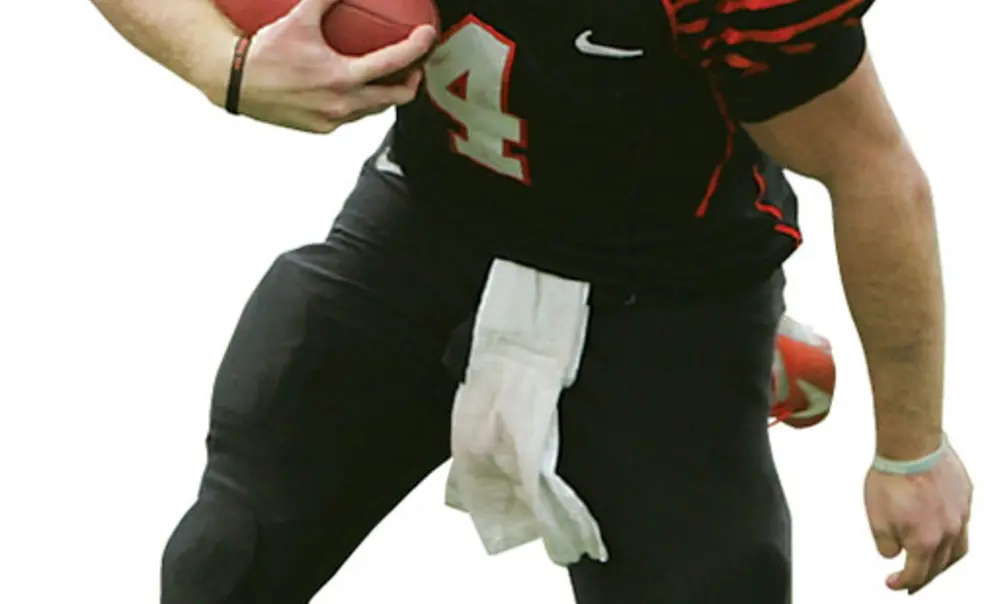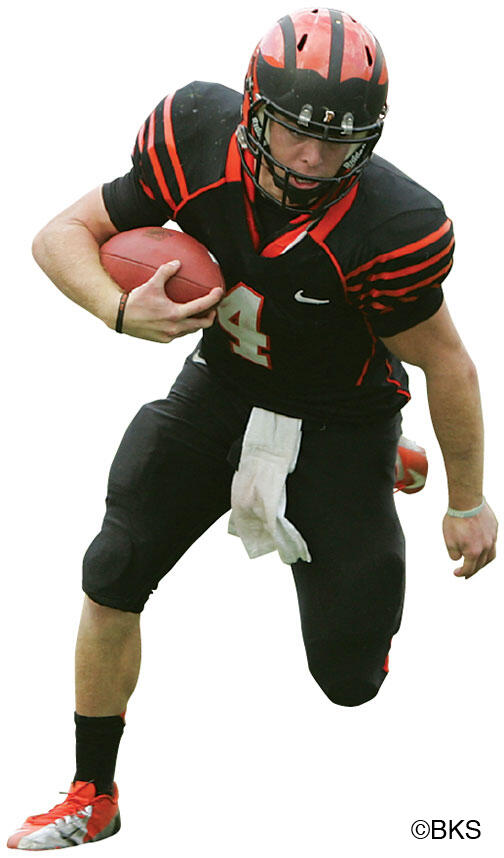Football: The Mighty Quinn
Epperly ’15’s versatility, decision-making drive an extraordinary offense
Last year, quarterback Quinn Epperly ’15’s statistics were nothing short of eye-popping. En route to being named the Ivy League Offensive Player of the Year, he tied a program record with 25 passing touchdowns and nearly matched another with 18 rushing scores. A deeper look at the 2013 season shows those stats did not lie — Epperly truly was the key to Princeton’s offensive prowess.
Only one team in the Football Championship Subdivision (FCS) averaged more points per game in 2013 than the Tigers’ 43.7; even after adjusting for the fast pace of its no-huddle offense (which leads to more possessions for each team), Princeton was 11th in points per drive. But while every other top-scoring team also ranked highly in yards per play, the Tigers were just slightly above average in that category. Instead, their offense was exceptional because it excelled at avoiding turnovers and scoring when it reached the red zone, the final 20 yards before the goal line. Epperly was crucial in both of those categories.
Epperly solidified his reputation as an accurate thrower when he completed an NCAA-record 29 consecutive passes against Cornell last November. By that point, the southpaw was deep into a nearly mistake-free season: Only three of his 306 attempts were intercepted, the lowest rate among FCS quarterbacks. (The ball was as secure in Epperly’s hands as it was in the air; Princeton’s leading rusher lost just one fumble all year.) The Tigers committed the nation’s fourth-fewest turnovers per play, allowing them to sustain long drives.
Of course, long drives don’t always lead to points. In 2011, when Epperly was a sparingly used rookie, the Tigers learned that lesson the hard way. They converted just one-third of their red-zone possessions into touchdowns, tied for worst in the nation. But Princeton was almost automatic in the final fifth of the field last season, scoring a touchdown 76 percent of the time — eighth-best nationally and a big factor in its two-year rise from 1–9 to 8–2.
Not coincidentally, that was where Princeton relied most heavily on Epperly, a prototypical goal-line quarterback with the size to power through linemen and the touch to throw into tight spaces. Inside the red zone, 64 percent of the Tigers’ plays involved him as a passer or rusher — compared to 43 percent in all other situations — and 81 percent of their red-zone touchdowns were thrown or scored by Epperly.
With much of last year’s core returning, Princeton’s strategy will likely be familiar — move the chains and avoid mistakes. If Epperly repeats his passing consistency and red-zone efficiency as a senior, the Tigers’ offense again should be one of the nation’s best.













No responses yet